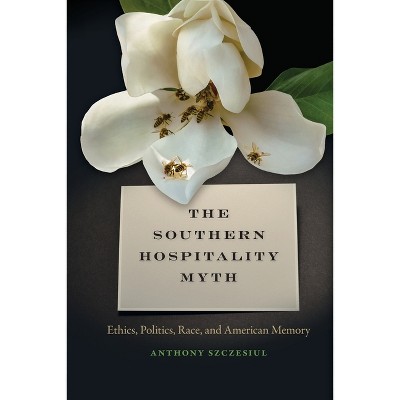The Signifying Eye - (New Southern Studies) by Candace Waid (Hardcover)

About this item
Highlights
- A bold book, built of close readings, striking in its range and depth, The Signifying Eye shows Faulkner's art take shape in sweeping arcs of social, labor, and aesthetic history.
- About the Author: CANDACE WAID is a professor of English and comparative literature at the University of California, Santa Barbara.
- 408 Pages
- Art, Criticism & Theory
- Series Name: New Southern Studies
Description
About the Book
The Signifying Eye shows Faulkner's art take shape in sweeping arcs of social, labor, and aesthetic history. Steeped in history, this book locates a heightened reality that goes beyond representation to bring Faulkner's novels, stories, and drawings into visible form through Whistler, Beardsley, Gorky, and de Kooning.Book Synopsis
A bold book, built of close readings, striking in its range and depth, The Signifying Eye shows Faulkner's art take shape in sweeping arcs of social, labor, and aesthetic history. Beginning with long-unpublished works (his childhood sketches and his hand-drawn and hand-illustrated play The Marionettes) and early novels (Mosquitoes and Sartoris), working through many major works (The Sound and the Fury, As I Lay Dying, Sanctuary, Light in August, and Absalom, Absalom!), and including more popular fictions (The Wild Palms and The Unvanquished) and late novels (notably Intruder in the Dust and The Town), The Signifying Eye reveals Faulkner's visual obsessions with artistic creation as his work is read next to Wharton, Cather, Toomer, and--in a tour de force intervention--Willem de Kooning.
After coloring in southern literature as a "reverse slave narrative," Waid's Eye locates Faulkner's fiction as the "feminist hinge" in a crucial parable of art that seeks abstraction through the burial of the race-defined mother. Race is seen through gender and sexuality while social fall is exposed (in Waid's phrase) as a "coloring of class." Locating "visual language" that constitutes a "pictorial vocabulary," The Signifying Eye delights in literacy as the oral meets the written and the abstract opens as a site to see narrative. Steeped in history, this book locates a heightened reality that goes beyond representation to bring Faulkner's novels, stories, and drawings into visible form through Whistler, Beardsley, Gorky, and de Kooning. Visionary and revisionist, Waid has painted the proverbial big picture, changing the fundamental way that both the making of modernism and the avant-garde will be seen.Review Quotes
The Signifying Eye will teach even experienced Faulknerians something new on just about every page, while those early in their encounter with Faulkner's novels will be offered a series of brilliant perspectives on the author's astounding creativity and the superabundant richness and complexity of his body of work. With The Signifying Eye Waid will take her place among the most important of all Faulkner critics, and all of us will have to engage and reckon with her book.
--Michael Zeitlin "University of British Columbia and past editor of The Faulkner Journal"A brilliant and important book. This rich collation brings together Faulkner's words and pictures with an impressive array of other artists' pictures--de Kooning, Beardsley, Whistler--and the prose of Wharton, Cather, and Waid herself. Waid's inquisitive eye not only sees but touches all that it lights on. To see what's there and make it visible to everyone who has the courage to look: that's Waid's mark.
--Alan Trachtenberg "Yale University"In this innovative and arresting work Waid persuades us of the value, ultimately the necessity, of understanding Faulkner as a southern modernist working within two seemingly incompatible traditions: the oral traditions of southern, regionalist literature and the self-conscious, print-based textuality of the modernist avantgarde. Yet The Signifying Eye offers us still more. It develops into a meditation on the unique visions of experience that give modern American writing and painting their distinctive character and appeal.
--Maria DiBattista "Princeton University"The strength of this book is that it is a synthesis of thinking about how William Faulkner engaged with visual culture. That said, this book is hard to summarize, as it is not an exposition of a single argument. It is, rather, an exploration of the significance of Faulkner's writing by an established scholar, Candace Waid, whose ideas are many, acumen is great, and breadth of knowledge is undisputed. What she has presented to us is a conceptually rich, but difficult, book.--Travis Nygard "American Studies"
About the Author
CANDACE WAID is a professor of English and comparative literature at the University of California, Santa Barbara. She is the author of Edith Wharton's Letters from the Underworld: Fictions of Women and Writing and editor of the Norton Critical Edition of The Age of Innocence.










